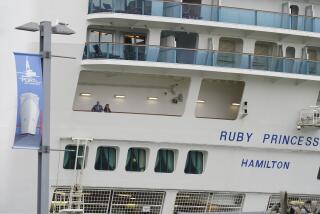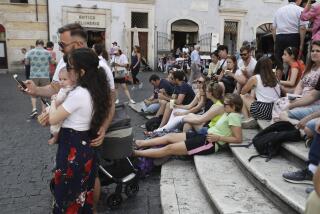On a trip, it’s all about risk assessment
- Share via
IN March, two vacation tragedies struck Americans. One was the deaths of 12 U.S. travelers taking a bus tour of a mountainous region in Chile; the other was the death of an American cruise passenger and serious injuries to 11 others during a shipboard fire.
Let’s analyze both, starting with the bus tragedy. Conventional wisdom suggests that the accident occurred because the American group hired an unlicensed bus. I don’t buy that. Many of us have been on buses traveling mountain roads; we’re aware of the narrow margin of safety involved, whether or not the bus is licensed.
On several occasions, I have thought that a bus on which I was a passenger was going too fast and that the driver should proceed more cautiously along narrow mountain roads. Because even licensed drivers miscalculate or drive without sufficient rest, the question becomes one of risk, whether to board a bus bound for a ski area or heading through a mountainous area of any country, including the United States.
Several times in this column, I have urged cruise passengers disembarking in a port city (last month’s bus victims were on a cruise that had docked in a Chilean town) to consider wandering on their own through the town and seeing its attractions, without taking an expensive optional tour with their fellow cruisers.
My reasons were cultural and unrelated to safety; you have a more authentic experience when you wander a foreign location on your own. But I also feel uneasy when I’m on a tour bus that is traveling much faster than I would drive.
I have also suggested that cruise passengers round up two others and share a taxi. Travelers have more control of these vehicles, whose drivers can be directed to go more slowly.
No matter whether a tour bus is licensed, a passenger should always consider the potential danger of travel on difficult, narrow roads. This is a choice each of us has to make.
The second tragedy was the fire that broke out during the night aboard the Star Princess (of Princess Cruises) while it was sailing the Caribbean. Some searching questions need to be asked about this. How could a modern cruise ship experience such a major conflagration? If you saw the pictures, you’ll recall that the fire spread to a large part of the ship.
According to the cruise line, all cabins and public areas aboard the ship had smoke detectors as well as fire sprinklers, complying with International Maritime Organization codes. Princess also said that all materials aboard were approved by regulatory bodies -- including the U.S. Coast Guard -- and that the smoke detectors functioned appropriately and firefighters responded quickly. If so, why was there so much damage?
Perhaps the open decks should be patrolled throughout the night by ship’s personnel -- not only to detect fires, but also to prevent foul play. Surely the cruise lines can afford this; such patrolling staffers would offer a quick response to fires and any “passenger overboards,” intentional or otherwise.
Meanwhile, we should all exercise normal precautions while on a cruise ship or touring in a mountainous area. Never go out alone at night on an open deck. And think twice about those mountain tours, regardless of whether the bus company is licensed or unlicensed, expensive or cheap.
More to Read
Sign up for The Wild
We’ll help you find the best places to hike, bike and run, as well as the perfect silent spots for meditation and yoga.
You may occasionally receive promotional content from the Los Angeles Times.






